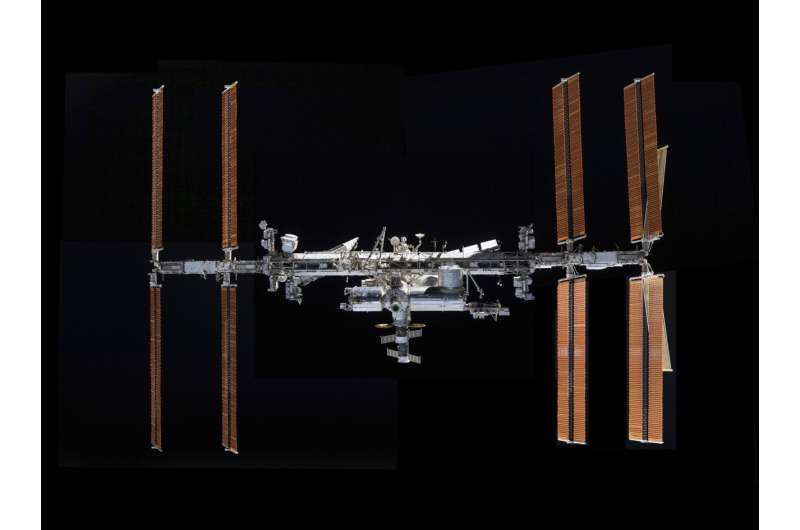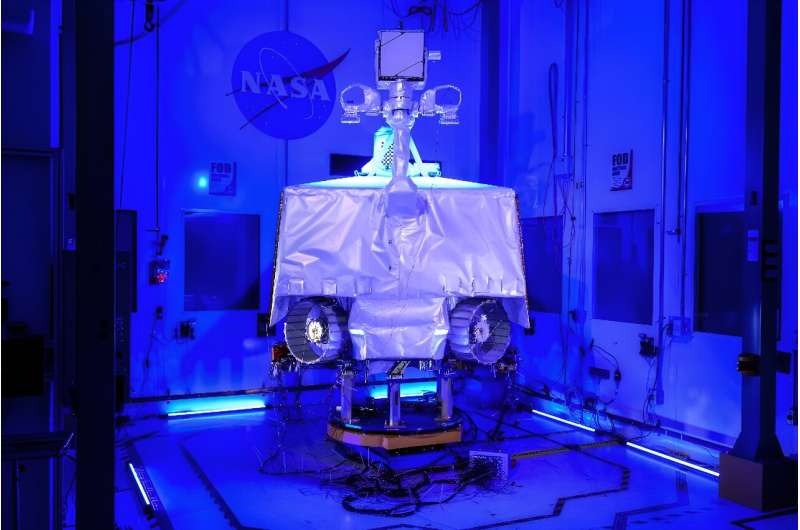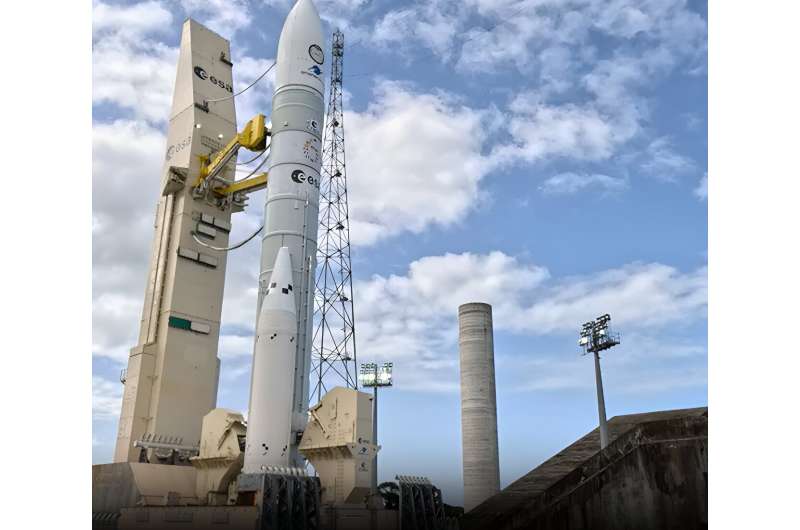Maxar Intelligence unveils first images from next-generation WorldView Legion satellites
Thursday, 18 July 2024 11:45
Amazon gears up for NASA satellite data relay demonstration
Thursday, 18 July 2024 11:18

Artemis II: no pressure
Thursday, 18 July 2024 11:00 Image:
Image:
The Orion vehicle that will bring astronauts around the Moon and back for the first time in over 50 years was recently tested in a refurbished altitude chamber used during the Apollo era.
Engineers tested Orion in a near-vacuum environment designed to simulate the space conditions the vehicle will travel through during its mission towards the Moon. Teams emptied the altitude chamber of air, a process taking up to a day, to create a very low-pressure environment over 2000 times lower and more vacuum-like than inside your vacuum cleaner. Orion remained in the altitude chamber’s low-pressure environment for around a
The next full moon is the buck or thunder moon
Thursday, 18 July 2024 09:47
The next full moon will be Sunday morning, July 21, 2024, appearing opposite the sun (in Earth-based longitude) at 6:17 AM EDT. For the International Date Line West and the American Samoa and Midway time zones this will be late Saturday night. For Line Islands Time this will be early Monday morning. The moon will appear full for about three days around this time, from Friday evening through Monday morning, making this a full moon weekend.
The Maine Farmers' Almanac began publishing "Indian" names for full moons in the 1930s and these names are now widely known and used. According to this almanac, as the full moon in June the Algonquin tribes of what is now the northeastern United States called this the Buck moon. Early summer is normally when the new antlers of buck deer push out of their foreheads in coatings of velvety fur. They also called this the Thunder moon because of early Summer's frequent thunderstorms.
Europeans called this the Hay moon for the haymaking of early summer, and sometimes the Mead moon (although this name was also used for the previous full moon).
How NASA and SpaceX will bring down the space station when it's retired
Thursday, 18 July 2024 07:30
SpaceX will use a powerful, souped-up capsule to shove the International Space Station out of orbit once time is up for the sprawling lab.
NASA cans lunar rover after spending $450 million building it
Thursday, 18 July 2024 07:10
NASA announced Wednesday that cost overruns and delays have forced it to cancel a planned moon rover it already spent $450 million to develop, marking a significant setback for the agency's lunar exploration program.
The Volatiles Investigating Polar Exploration Rover (VIPER) was intended to explore the lunar south pole in search of ice and other resources, paving the way for planned crewed missions by American astronauts under the Artemis program later this decade.
"Decisions like this are never easy," said Nicky Fox, NASA's associate administrator of the science mission directorate.
"But in this case, the projected remaining expenses for VIPER would have resulted in having to either cancel or disrupt many other missions.
ESA gears up for the Farnborough International Airshow
Thursday, 18 July 2024 06:32
The Farnborough International Airshow is set to return for its 76th edition. Held every two years, the UK’s largest trade airshow will be back at the historic Farnborough Airport in Hampshire from 22 to 26 July 2024. ESA will be there to showcase the agency’s latest achievements and to highlight its next steps and future vision for Europe in space. An intense programme of panels and sessions awaits industry professionals and trade visitors on the first four days, while the public is welcome on 26 July for the public day.
U.S. Space Command chief expresses confidence in Falcon 9’s prompt return to flight
Wednesday, 17 July 2024 20:25

U.S. Space Force chief emphasizes international partnerships
Wednesday, 17 July 2024 19:31

Video: Ariane 6 liftoff from the launchpad
Wednesday, 17 July 2024 19:00
While no person could get this close during Ariane 6's inaugural flight on 9 July 2024, several small cameras bravely witnessed its take-off from the launchpad.
After years of preparations, the Vulcain main stage engine ignites, arms providing cryogenic fuels to the rocket until the very last moment retract and boosters fire—Ariane 6 is space-bound. As it lifts off, vast amounts of water are pumped at high speed to dampen vibrations at the launch site, which then come rushing towards one of these small cameras in a dramatic swirl, hiding the departing rocket from view.
Ariane 6 launched from Europe's Spaceport in French Guiana at 16:00 local time (20:00 BST, 21:00 CEST), designed to provide more launch power with higher flexibility and at a lower cost than its predecessors.
The launcher's configuration—with an upgraded main stage, a choice of either two or four powerful boosters and a new restartable upper stage—will provide Europe with greater efficiency and a wider range of launch services, including for the launch of multiple payloads into different orbits on a single flight.
Planet Labs Secures Pilot Contract for AI-Enhanced Satellite Data
Wednesday, 17 July 2024 16:59 Planet Labs PBC (NYSE: PL), a top provider of daily Earth data and insights, announced a seven-figure pilot contract with an international defense ministry for its PlanetScope data, now enhanced with SynMax's AI-based Theia solution.
Together with SynMax, a Houston-based satellite analytics and intelligence company, Planet is offering an advanced maritime domain awareness (MDA) solution fo
Planet Labs PBC (NYSE: PL), a top provider of daily Earth data and insights, announced a seven-figure pilot contract with an international defense ministry for its PlanetScope data, now enhanced with SynMax's AI-based Theia solution.
Together with SynMax, a Houston-based satellite analytics and intelligence company, Planet is offering an advanced maritime domain awareness (MDA) solution fo 

 Image:
Heart of Hertz 2.0
Image:
Heart of Hertz 2.0 




